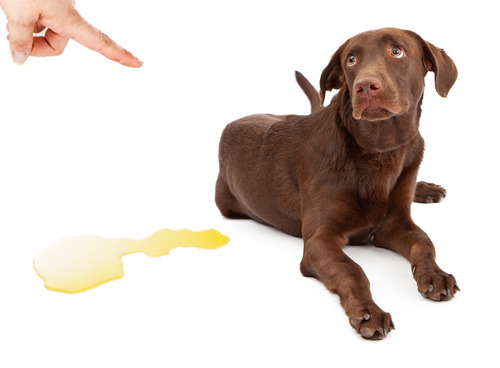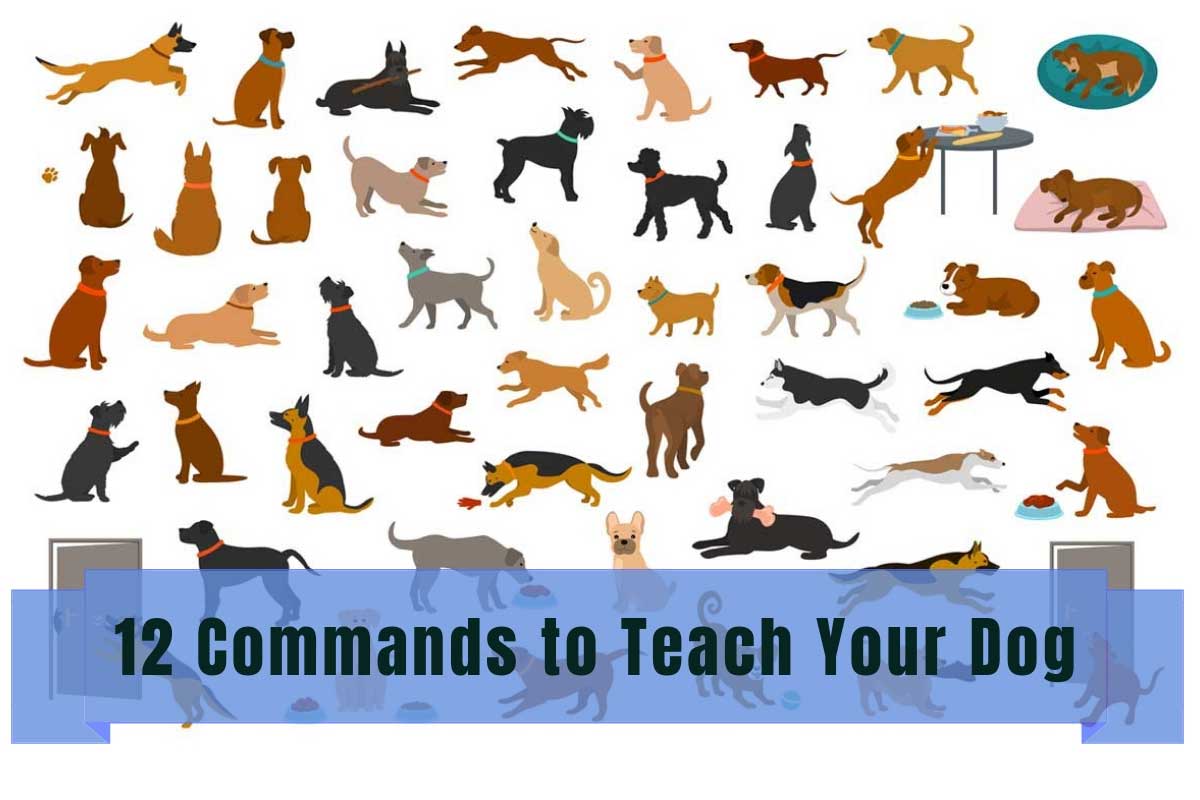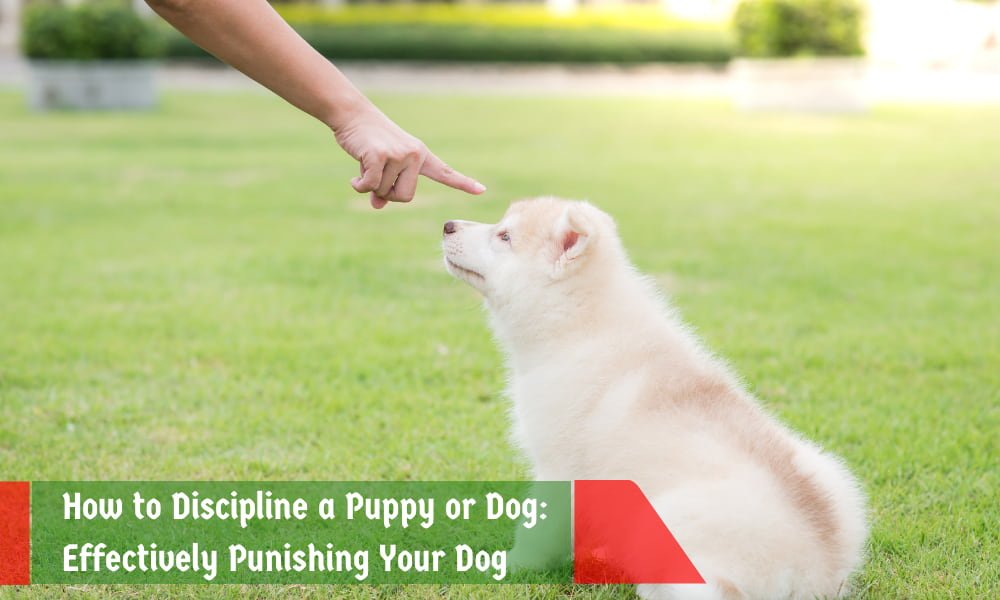
If you don’t have a dog, you may be surprised to hear that living with one is not always fun. If you do own a dog, you get what we’re saying. Although owning a dog is rewarding and fulfilling, they are not born perfect and well behaved, no matter how cute they are when they’re puppies. Dogs need a lifetime of structure and discipline to become the well-behaved angels that we want them to be.
So, whether or not you’re a natural disciplinarian, what is the best way to discipline your dog? Is it ever okay to physically punish a dog? Or is it better to go with that positive reinforcement method you heard about?
When it comes to disciplining a puppy or dog, encouraging good behavior early on is important. Not only will you thank yourself, but your dog will also thank you in the long run. Dogs respond well to structure and routine and discipline goes along with that. Dogs need to know how they are expected to behave and when you want to see these positive behaviors from them.
So, what is the best method to effectively punish your dog or puppy when they’ve done something bad? Let’s take a look at ways to discipline your pooch that result in lasting positive behavior.
Contents
- Should You Punish Your Dog?
- The Two Types of Obedience Training
- Positive Ways to Punish and Discipline
- Time-outs
- Why Hitting Or “Spanking” Is A Definite No
- Disciplining a Puppy
- Why Positive Reinforcement Works Better Than Aversive Training
- When Are the Best Times for Discipling Your Dog?
- Disciplining Your Pet When You’re Away
- The Do’s and Don’ts of Disciplining Your Dog
- The Don’ts of Disciplining a Puppy or Dog
- The Do’s of Disciplining a Puppy or Dog
Should You Punish Your Dog?
Before we start examining different methods of discipline and how effective they are, we need to discuss what punishment and discipline are.
Punishment often implies a discipline method that is based on physical harm, like spanking or hitting your dog or speaking in harsh and frightening tones.
When you punish your dog, you are indeed using a negative and harmful method to discipline them which can cause far more harm than good. Not only can this cause behavioral issues in dogs but they will also most likely become afraid of you, which is the absolute last thing either of you wants.
The Two Types of Obedience Training
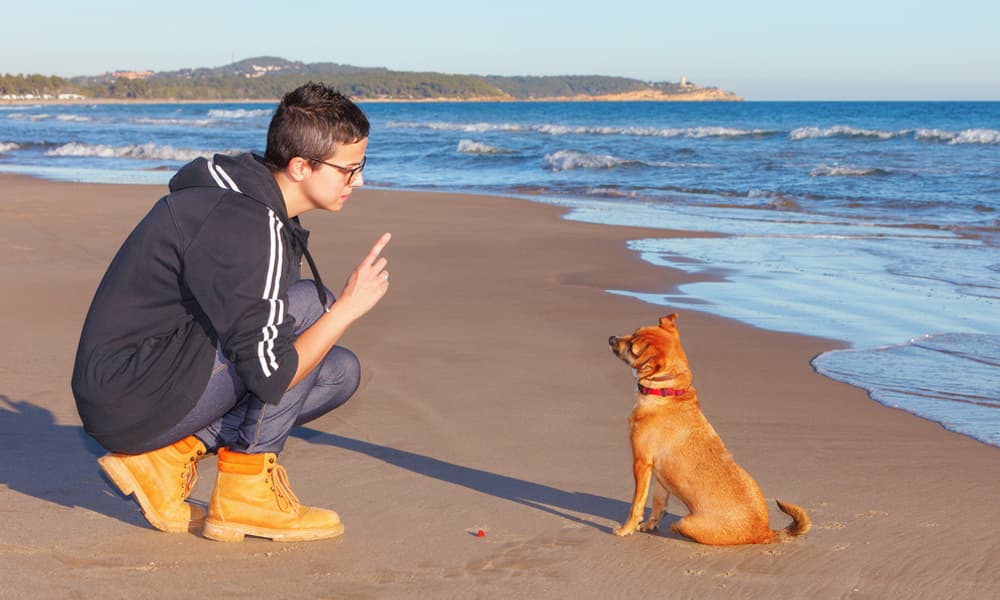
There are two methods of obedience training that fall into the following categories: aversive and positive.
Spanking or hitting your dog is considered aversive obedience training. Any physical punishment or frightening tones fall into the aversive category. Aversive training can be defined as “unpleasant stimuli to induce changes in behavior through punishment”. Aversive forms of training or discipline are largely frowned upon as an effective way to discipline your dog but they are, however, still widely used.
Positive obedience training or positive reinforcement is the second type of obedience training and is considered the best method for disciplining your dog. Positive reinforcement guides your dog in the right direction and rewards versus inhumanely punishing them when they do something wrong. Aversive training methods can lead to confusion while the positive reinforcement method of rewarding your dog when they do something right encourages them to do it again rather than cowering out of fear that they’ll something wrong.
Positive Ways to Punish and Discipline
Punishment doesn’t have to be a negative or scary experience for your pup. Dogs need discipline to understand what they are and are not allowed to do. Positive and beneficial forms of punishment show them that if they act out, they don’t get what they want rather than being punished and scared for acting out.
Time-outs
Time-outs are considered a positive way to punish your pup but should be used sparingly and for only one specific type of misbehavior. Although time-outs may not seem particularly mean or aggressive, they’re pretty big punishment for dogs – they don’t like to be isolated. Pick a specific location in your house and make sure everyone in the household is on board with the time-out. Pick a location that’s not scary for your dog but one that they’ll find boring.
It’s important to start by giving a stern warning, such as “enough”, before going into the time-out. If your pup continues to misbehave, take it by the collar, avoiding eye contact, to the designated time-out space. Leave the dog there for two to five minutes until they calm down. If your pup still hasn’t calmed down by the time you come back, walk away for a few seconds and try again.
Some other positive ways to punish your dog include:
●Using your voice
Instead of using physical discipline, use your voice to correct unwanted behavior. There is no need to yell, scream, or scare your pup. Using a simple but firm “no” or “enough” should suffice, followed by avoiding touch and eye contact.
●Remove their toys
Just as with a child, no dog wants their favorite toy taken away. Try removing toys until they calm down and then reward them by calmly giving them back.
● Avoid giving attention
Your pup will not appreciate you withholding attention – after all, you’re its best friend and it wants nothing more than to please you. However, if it is being particularly naughty, rewarding it with attention is not going to help in terms of learning discipline. It will think that it can do whatever it wants and you’ll still give it attention to its heart’s desire. Avoid eye contact and any attention at all until it calms down. Walking straight out of the room is often effective.
Why Hitting Or “Spanking” Is A Definite No
Unfortunately, spanking your dog is a training method that has been consistently used over the years by those who either don’t care or don’t realize its effects. If you care about your relationship with your dog and also do not want it to develop behavioral issues, hitting or spanking is highly discouraged. Common negative effects of spanking include:
● Insecurity and fear
Your dog will generally feel insecure in your home and develop a fear of you. Again, if you have a dog, to have a good relationship with it, spanking is not something you want to do. Your dog may stop the unwanted behavior but it may want nothing to do with you in fear that you’ll hurt it.
● Hiding and running away
Again, due to the fear that your dog may have developed towards you for hitting them, it may start to hide and run away from you.
● Aggressive behavior
Two of the main causes of aggression in dogs are fear and stress. You may become the stress trigger for your dog which could result in it becoming aggressive to both other dogs and humans in the household.
Hitting your dog is not teaching it what it should and shouldn’t be doing – you’re only showing t that you are a source of pain. It will end up scared and confused because it doesn’t realize what it did wrong since you’re not actually addressing the problem. Showing it what it should be doing instead and rewarding it when it does so is a much better way to stop unwanted behavior.
Disciplining a Puppy
Training and disciplining a puppy when it’s little is the ideal situation. Not only will you have to deal with behavioral issues for a shorter period of time, but your dog will also learn more quickly as a puppy.
Training a puppy is certainly not easy – their attention spans are short and they focus on playing and having fun with tons of energy. They also have never been trained or disciplined before so you are really starting from square one.
So, what is the best way to go about disciplining a puppy? Treats, treats, and more treats along with warmth and praise.
When it comes to punishing a puppy, there is not a whole lot of difference in terms of the methods that you use when training an older dog. Using positive reinforcement and productive punishments, like withholding attention and taking away toys, can do wonders for a puppy as well. When they do something right, reward them with a treat and lots of praise immediately.
Puppies understand that treats are a positive thing, just as full-grown dogs do, and they understand when something of value is being held away from them. Withholding and rewarding teach puppies that their actions have consequences which are important lessons to establish early on.
Why Positive Reinforcement Works Better Than Aversive Training
What tends to baffle those who use aversive training over positive reinforcement is that positive reinforcement is a tried and true method that has proven results whereas aversive training does not.
Those who would hit a dog either simply do not know or do not care that they are severely compromising their relationship with it and that there are much better ways to go about disciplining them.
Your dog wants to behave in a way that makes you happy because it results in positive benefits like treats and belly rubs. Of course, they have to know what it is that makes you happy in the first place which is why they need to be shown the correct behavior first. Yelling at your dog and not showing them what they should be doing only results in fear and confusion.
Positive training methods come down to conditioning rather than punishment. Your dog will understand that if it does its business outside, it will get rewarded with yummy treats whereas if they do it inside on your carpet, they get a time out and no yummy treats. Eventually, once this connection is truly made, this becomes a no-brainer for your dog. They want nothing more than to please you and delicious treats on top of that is a bonus.
When Are the Best Times for Discipling Your Dog?
We’ve now established that rewards-based discipline is the only way to go when it comes to disciplining your dog. So, how and when do you go about doing it?
If your dog engages in behavior like going to the bathroom inside or something that you know it should absolutely not be doing, that is clearly the time to try positive reinforcement training. That said, certain times are more beneficial than others when it comes to this technique. Those are the times that your pup looks forward to the most – going out for a walk, having snuggle time with you, or getting its favorite snack. Withholding these activities until it behaves is a good time to practice this technique.
If your dog has done something they’re not supposed to, such as deliberately not listening, biting, or nipping, it is perfectly acceptable to withhold its favorite activity until it calms down and corrects the behavior itself. It will understand that this is something that it’s not supposed to do and that it does not get to participate in its favorite activity until it does.
Disciplining Your Pet When You’re Away
Did you know that you can reward your pup for positive behavior, even when you’re not home? If you want to go the extra mile, try a pet camera that dispenses dog treats. If you’re away at the office all day or if your pup suffers from separation anxiety when you’re gone, you can keep an eye on what it’s doing by placing a camera in your home. These cameras often have two-way audio which allows your pup to be able to hear a stern “no” and gives you the option to reward it with a treat once the behavior is corrected.
The Do’s and Don’ts of Disciplining Your Dog
The line between aversive and positive reinforcement training is a little blurred at times if you truly don’t know the difference. After all, some forms of verbal discipline are okay in positive reinforcement training while others are considered aversive. So, to recap, what are some of the do’s and don’ts of disciplining your pup?
The Don’ts of Disciplining a Puppy or Dog
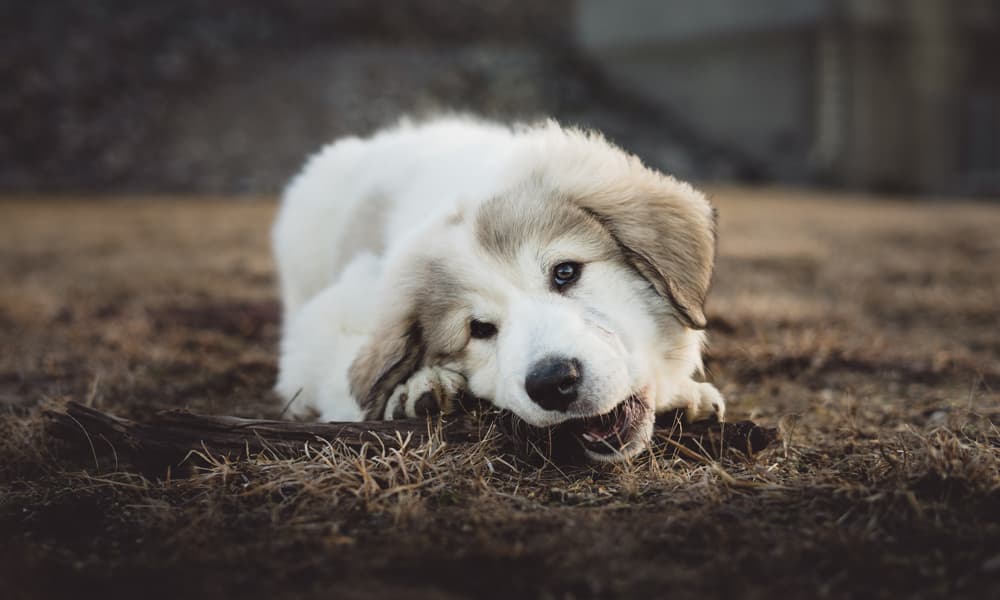
● DON’T yell or scream at your dog
There is absolutely no need to yell or scream when it comes to disciplining your dog. Dogs respond better to a change in tone rather than a change in volume and using clear, simple commands such as “no”, “stop it”, or “leave it” should be enough. There is no need to scream at your dog when it does something bad. There are a few things that could result from this form of discipline. First of all, your dog may just end up tuning you out if you just sound like loud noise to them. This tends to be what happens when your discipline all comes out as yelling. This is the best-case scenario, though, as your shouting voice could either excite or agitate your pup. This may result in confusion or fear which could spur negative and even aggressive behavior.
● DON’T hit your dog
Regardless of how your parents might have done things growing up, we should know by now that it is not okay to hit dogs. There is never a good enough reason to do so and it is not a “quick fix” or a “one-off” situation. If you feel like nothing else is working to discipline your dog and that physical violence is the last resort, you’re wrong. At that point, you need to hire a dog trainer to get to the root of the problem. Hitting your dog almost always makes the situation worse. Your dog may become fearful of you or start acting out in other ways because it’s afraid. The negative behavior may also not change at all or be made even worse.
● DON’T rub your dog’s nose in an accident
The idea of “rubbing your dog’s nose in it” is not one that has ever made sense. Rubbing your dogs’ nose in its accident is purely an act of cruelty. Your dog has absolutely no idea why you’re doing it. They do not know that it’s unpleasant. This action affects your relationship with your dog and creates a lot of anxiety for it. If it didn’t entirely understand that it’s not allowed to go to the bathroom in the house, there are other ways to effectively condition your dog to go outside. They involve positive reinforcement and redirecting your dog outside. If your dog does know that it’s not supposed to go to the bathroom inside the house, it may still be drawn to the areas in which it has had previous accidents. This is because it smells the urine left behind. To get rid of the smell effectively, use an enzyme-based cleaner specifically meant to eliminate dog urine. Repeat the process until you are sure that there is no smell remaining.
● DON’T allow unwanted play
Don’t allow your pup to chew up your shoes because you think they’ll grow out of it. How many times has a puppy stolen a pair of shoes only to have you throw in the towel and give it to them to destroy? Don’t allow your puppy to think this behavior is okay, even if you’re okay with it. Visitors may not think it’s so cute when your pup ruins their shoes. It’s important to establish early, through positive reinforcement and correction, what is and isn’t okay to play with.
The Do’s of Disciplining a Puppy or Dog
● DO reward good behavior
Did your puppy sit without you asking it to or wait patiently for its meal instead of getting overexcited? Don’t forget to praise your dog, even when you’re not actively training them. If your dog sees that good behavior is getting recognized, it’ll work hard to continue to follow the rules as much as possible.
● DO be observant
It’s important to catch your dog in the act to successfully discipline it. A common reaction is to spot something like a chewed-up shoe or an accident and get mad at your dog as soon as you notice. Dog owners drag their dog over to the mess and expect them to understand by sight that it did this bad thing. If you do not catch your dog in the act, there’s nothing you can do – we repeat, there’s nothing you can do. The next time your dog engages in this behavior and you catch them in the act, that is the time to interrupt the unwanted behavior, correct it, and reward for the correction.
● DO make sure your dog’s health is intact
If your dog is engaging in unwanted behavior such as frequent urination in the house, make sure it doesn’t have a health condition – there’s always a chance that it has a urinary tract infection and cannot help the frequent accidents. If your dog’s mood is visibly different overall and it’s becoming aggressive or refusing to listen, there might be an underlying medical issue going on there as well. Consult with a vet and make sure there’s nothing to be concerned about medically. When it comes to disciplining your dog, keep in mind that you’re doing so for an important reason. None of us would be able to have dogs as indoor pets if we didn’t establish a certain number of rules and discipline. Your dog wants and respects structure and routine and disciplining your dog does not have to be a negative thing. It’s up to you as a dog parent to teach your pup to be the absolute best version of itself and good behavior will strengthen its relationship with anyone it comes into contact with – and most importantly, with its favorite person – you.
I grew up in a household that was filled with animals. I believe that my fate as a dog-loving person was sealed in early childhood since my parents owned several dogs of varying sizes and breeds. There was no choice but to take care of and learn about dog habits and the best animal care practices — otherwise, I’d be clueless about how to go about the creatures I was surrounded by day and night.
As a life-long puppy lover, I know a thing or two about dogs and how to go about caring for them in the best way possible. Although I’m not a professionally trained dog behaviorist, trainer, or veterinarian, all of my knowledge and experience with canines comes from a place of love and a deep-rooted passion for dogs and animals in general.
Seeing as dogs kept me company throughout every stage of my life, I decided to follow a different path in my academic life and obtained a Bachelor’s and Master’s degrees in Marketing Management and Digital Advertising, which ultimately allowed me to combine my professional training and personal experience by creating the ultimate dog lover’s resource website! Along with my husband, Dave, I run MySweetPuppy for like-minded dog lovers who want to have a single, clear, and reliable information source about anything and everything related to dogs and their well-being.


